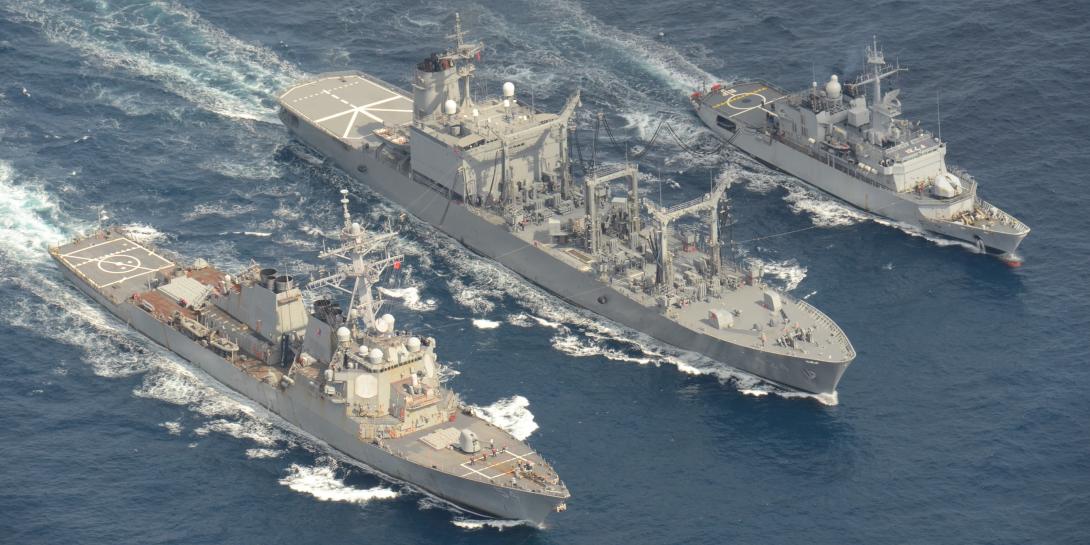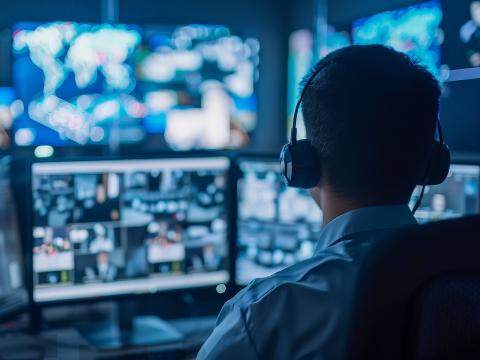The Indo-Pacific Command Gears Up to Face Down China
“The erosion of conventional deterrence vis-à-vis China” is the greatest danger the United States faces in the Indo-Pacific region, says the head of the vast area’s command. Adm. Philip Davidson, USN, commander of the U.S. Indo-Pacific Command (INDOPACOM), added that “without a valid and convincing conventional deterrent, China will be emboldened to take action to supplant the established rules-based international order.”
Speaking to the keynote audience on the first day of TechNet Indo-Pacific, running virtually March 1-3, Adm. Davidson explained that joint forces in the region must be able to provide combat-credible deterrence as part of their mission to ensure free and open access to trade routes throughout all domains. And this will require empowering the joint force with the capabilities of rapid force employment, accurate offensive power and effective defenses.
Our Joint Forces in the Indo-Pacific must be postured to provide combat credible deterrence to protect free and open access to trade routes through the air, sea, land, space, and cyberspace.—Adm. Philip Davidson, USN, commander (INDOPACOM) #AFCEATechNet @INDOPACOM
— Bob Ackerman (@rkackerman) March 1, 2021
“We must convince Beijing that the costs to achieve its objectives by military force are simply too high,” the admiral declared.
Adm. Davidson identified four key focus areas in INDOPACOM’s deterrence approach. The first is to increase joint force lethality, and this would emphasize an integrated, multidomain force. This includes cyber capabilities, space forces, special operations and ground forces equipped with long-range fires as well as air and maritime forces. Integrated air and missile defenses must employ multiple sensors and interceptors across the region to protect allies and partners. Adm. Davidson cited Guam as a major element for basing these sensor and weapon systems. Innovative technologies such as artificial intelligence, machine learning, quantum computing, remote sensing, big data analytics and 5G also will play important roles.
Integrated air and missile defenses that employ multiple sensors and interceptors distributed across the region to protect —not only the homeland including our U.S. territories, but also our U.S. forces forward.—Adm. Philip Davidson, USN, #AFCEATechNet @INDOPACOM
— Bob Ackerman (@rkackerman) March 1, 2021
The second focus area is to enhance force design and posture. This new version must “enable the convergence of capabilities from multiple domains and create the virtues of mass without concentration,” he stated. It will be accomplished by distributing a forward-deployed joint force across the battlespace while balancing lethality and survivability, he added. Persistent surveillance will be a key element of it.
The third focus is to strengthen allies and partners, which the admiral described as “the backbone of the free and open international order.” The United States is striving to increase its interoperability and compatibility across the region through increased frequency and intensity of combined operations, exercises and training with allies and partners, he maintained. A vital aspect of this will be the mission partner environment (MPE), which will enable joint and coalition command and control throughout the region. An integrated architecture will expand data sharing horizontally through information fusion centers in South Asia, Southeast Asia and Oceania, and these fusion centers will combine and analyze various sensor data from all domains to build a common situational awareness picture.
We are developing an integrated architecture to horizontally expand data-sharing among like-minded nations through the use of information fusion centers in South Asia, Southeast Asia, and Oceania.—Adm. Philip Davidson, USN, commander @INDOPACOM #AFCEATechNet
— Bob Ackerman (@rkackerman) March 1, 2021
The fourth focus area entails exercises, experimentation and innovation among allies and partners. Part of this effort is the development of a joint network of live, virtual and constructive ranges in key locations around the region, the admiral said. The United States will integrate its own ranges with those of Japan and Australia to improve training and exercise capabilities among the three nations.
An advanced Joint Exercise Program—combined with a Joint Range Network—provides us the ability to reveal certain capabilities we want our adversaries to see and conceal the things we do not want them to see.—Adm. Philip Davidson, USN, commander @INDOPACOM #AFCEATechNet
— Bob Ackerman (@rkackerman) March 1, 2021
Calling for innovation and challenging assumptions, Adm. Davidson cited several technologies that will be key to building the force capabilities necessary for effective deterrence against China. “The combination of artificial intelligence, quantum computing, remote sensing, machine learning, big data analytics and 5G technology will provide the necessary sensing, [command and control] and deep fires capabilities to support our maneuver forces in any contested arena,” he declared. “Indeed, these capabilities are critical enablers to deter day-to-day, in crisis, and key to our ability to fight and win.”





Comments